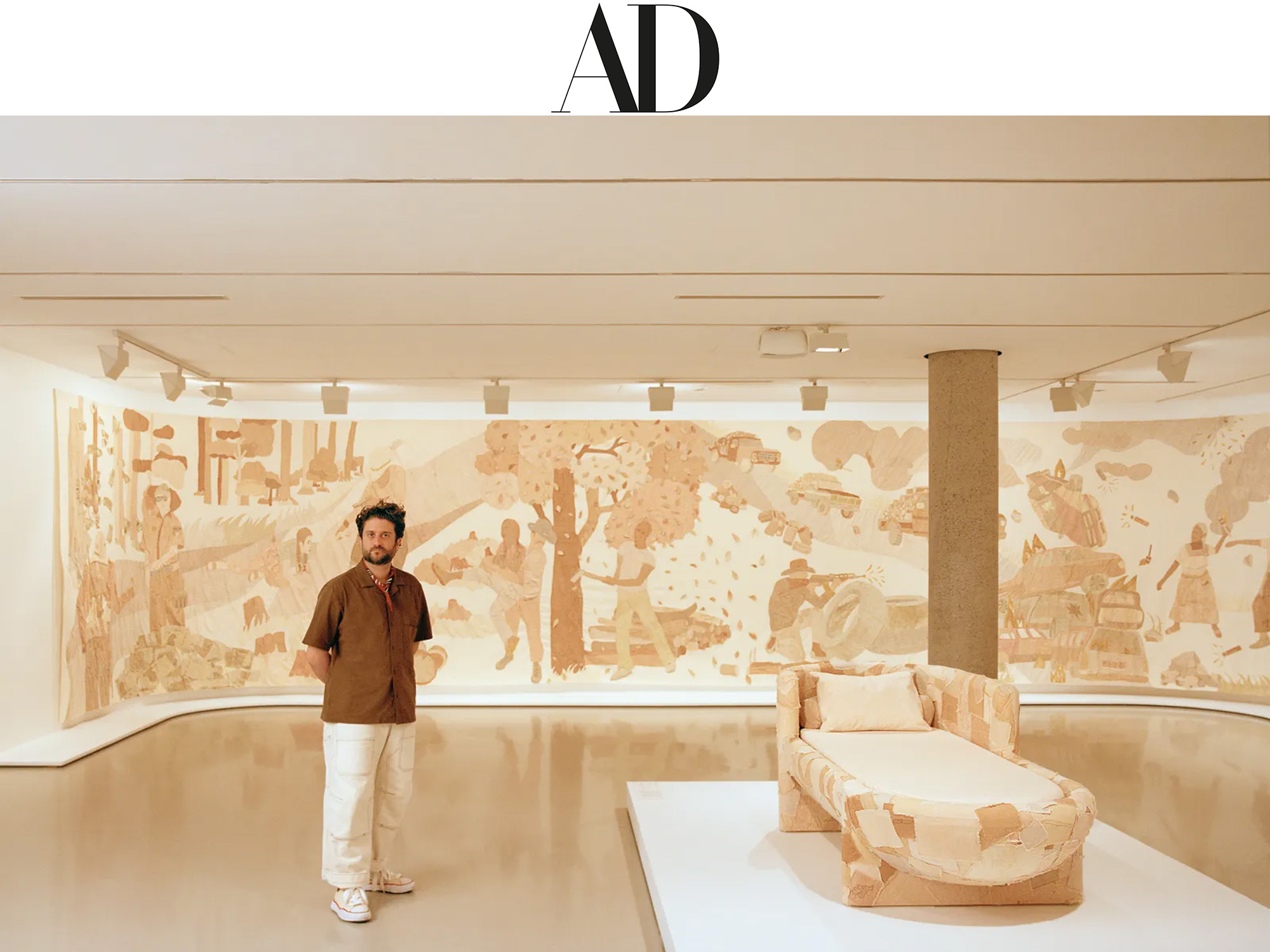By Hannah Martin
A demure palette of rose, lavender, and ochre belies the dark subject matter of “Conflict Avocados,” Fernando Laposse’s new installation at the National Gallery of Victoria in Melbourne, Australia. Images of destruction are stitched together into a 137-foot-long tapestry, wrapping one gallery of the museum’s Triennial exhibition to tell the shocking story of the fruit. “It’s often seen as this healthy, ethical thing,” explains Laposse, a Mexican designer whose work has explored the commercialization of indigenous corn and agave. “But if you look at everything that has to be destroyed for an avocado to get to you, it’s crazy.”
Laposse first became interested with the crop in 2019, when he was investigating an interruption to the monarch butterfly’s migration. In Michoacán, Mexico, he learned, forest had been illegally cleared to make way for avocado orchards. When a local environmental activist he planned to interview went missing, Laposse began a deep dive into the history of the popular produce, a phenomenon he likens to the drug trade. “When there’s something that makes so much money, it attracts all sorts of higher-level crime.”
Fueled by an insatiable year-round demand for guacamole, the avocado has become what Laposse calls “green gold,” growing fast and yielding skyrocketing profits. It has brought a string of violence to agricultural regions—some of it at the hands of cartels that have embraced the business as a means to make and launder money. All the while, that trade has reduced biodiversity, as varieties like Hass, which travel well, are prioritized.
Dyed using avocado waste from a guacamole vendor near his studio—and a touch of marigold—Laposse’s tapestry depicts fights, protests, headlines, and even smartphones bearing the recipes that have powered the market. Several residents and activists from Cherán, a town that has resisted the agricultural trend, appear in the textile as well as The Avocado Legacy, Laposse’s accompanying documentary. A chaise longue wrapped in the same fabrics and a cabinet clad in beeswax-coated avocado skins are also on view. “It’s not just about the avocado,” says Laposse. “It’s about being aware of the cost to the environment and to its people for a fruit—or anything else—to be delivered to you in record time.” Through April 7; ngv.vic.gov.au










